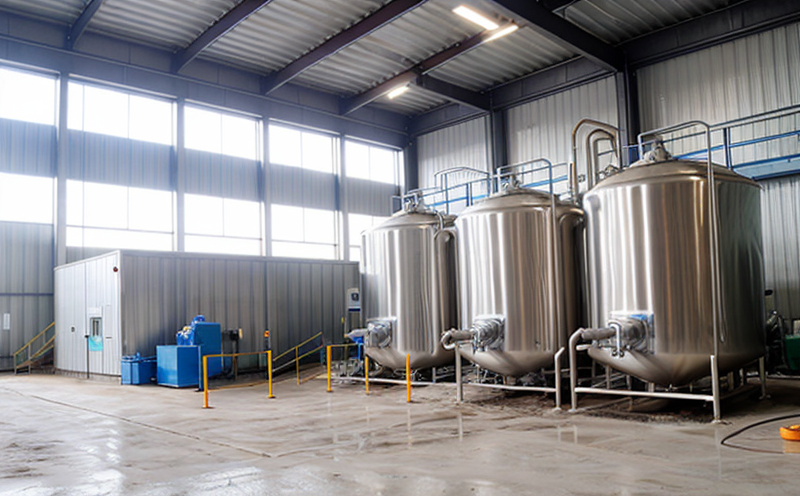ASTM D3652 Total Organic Carbon Test in Industrial Water
The ASTM D3652 test is a critical method used to determine the total organic carbon (TOC) content in industrial water. This test is essential for ensuring that water used in various processes meets stringent quality standards. The TOC level helps identify contamination and assesses the effectiveness of purification systems.
Industrial process waters are often subjected to a range of contaminants, including organic compounds from various sources such as chemicals, solvents, and by-products of manufacturing processes. Accurate measurement of TOC is crucial for maintaining the integrity of water quality throughout the industrial cycle. The ASTM D3652 method provides a reliable way to quantify these contaminants.
The test involves oxidizing organic compounds in the presence of oxygen at high temperatures, converting them into carbon dioxide (CO2). The amount of CO2 produced is directly proportional to the TOC content. This conversion step is critical and should be performed under controlled conditions to ensure accurate results.
Before performing the ASTM D3652 test, proper sample preparation is necessary. This includes filtering the water sample through a suitable filtration medium to remove inorganic particles that could interfere with the oxidation process. The filtered sample is then diluted if needed and introduced into the TOC analyzer for analysis.
The instrument used for this test typically employs either a high-temperature catalytic oxidation or an ultraviolet (UV) oxidation method followed by a detection system like non-dispersive infrared spectroscopy (NDIR). The choice of method depends on the expected TOC concentration and laboratory equipment. The accuracy and precision of these instruments are paramount to obtaining reliable results.
After the sample is processed, the instrument measures the CO2 released, which indicates the TOC content. Reporting standards for this test must adhere to ASTM D3652 guidelines, ensuring that all laboratories follow a consistent procedure. This standardization helps in comparing results across different facilities and over time.
The importance of the ASTM D3652 test extends beyond just compliance; it also aids in optimizing industrial processes by identifying potential issues early on. For instance, high TOC levels could indicate inefficiencies in wastewater treatment systems or upstream contamination sources that need addressing.
In summary, the ASTM D3652 Total Organic Carbon Test is a vital tool for quality assurance and process optimization in industries reliant on industrial water. By adhering to this standard, laboratories can ensure accurate and consistent measurements of TOC content, supporting better decision-making processes within organizations.
Applied Standards
| Standard | Description |
|---|---|
| ASTM D3652-18 | This standard specifies the procedure for determining total organic carbon in water by oxidation and infrared detection. It is widely used in industrial settings to ensure compliance with environmental regulations. |
| ISO 9074:2015 | An international standard that provides guidance on the measurement of TOC, ensuring consistency across different laboratories worldwide. |
Quality and Reliability Assurance
The reliability of ASTM D3652 tests is ensured through rigorous quality control measures. Regular calibration of equipment, validation of methods against known standards, and participation in proficiency testing programs are key components of this assurance.
Laboratories must maintain a clean, controlled environment to minimize external interferences during sample preparation and analysis. Proper training for personnel handling the samples and operating the instruments is also crucial to prevent errors that could affect test results.
Consistency in testing protocols across different batches of water samples helps establish trustworthiness. This consistency ensures that any detected changes in TOC levels are due to actual variations in the water quality rather than procedural inconsistencies.
Use Cases and Application Examples
- Water Treatment Monitoring: Continuous monitoring of TOC helps in adjusting treatment processes to meet desired purity levels.
- Pollution Control: Detecting increased TOC can signal the need for enhanced purification or waste management strategies.
- New Product Development: TOC testing is essential during R&D phases to ensure that new formulations do not introduce unacceptable organic contaminants into industrial processes.
- Supply Chain Management: Ensuring suppliers meet quality standards by verifying their water purity through ASTM D3652 tests.





